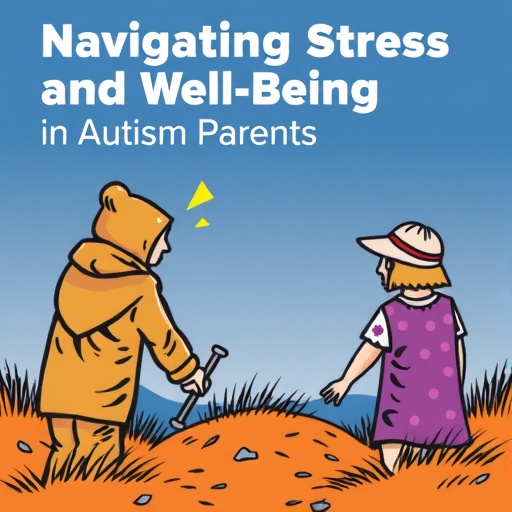Sudden cardiac arrest (SCA) remains one of the leading causes of mortality globally, and recent research sheds light on its prevailing trends and associated risk factors in China. A groundbreaking study conducted by Yu, Wang, and colleagues lays bare the complexities surrounding this perilous health issue, probing into its increasing rates and the demographic and lifestyle factors that are steering this alarming trend. The research suggests that with improved awareness and preventative measures, the fate of those at risk can be altered.
The phenomenon of sudden cardiac arrest is profoundly alarming, as it often occurs unexpectedly and is often fatal without immediate medical intervention. In their meticulous investigation, Yu et al. catalog the growing instances of SCA throughout China, revealing startling statistics that suggest this health crisis is not merely a personal health issue, but a public health emergency that warrants immediate attention. Their meticulous examination emphasizes how SCA cases have surged over the past few decades, urging both healthcare professionals and policymakers to re-evaluate effective strategies to combat this silent killer.
By examining the demographic variability in SCA occurrences, the study highlights how factors such as age, gender, and pre-existing health conditions play a significant role. Older adults, particularly those who exhibit other cardiovascular risk factors, demonstrate a higher propensity for experiencing sudden cardiac events. This demographic trend raises questions about the underlying health systems in place and the access to healthcare resources for the aging population within China. The researchers contend that addressing these disparities is paramount for effective prevention and intervention measures.
Furthermore, the research identifies lifestyle choices, particularly diet and exercise patterns, as critical components influencing SCA mortality rates. The transition towards Western diets, characterized by increased fats, sugars, and processed foods, alongside a sedentary lifestyle, has significant ramifications for cardiovascular health. The authors call for a return to traditional dietary practices, which align more closely with heart health, underscoring the pivotal role that nutrition plays in warding off cardiovascular illnesses.
The study also delves into the impact of socio-economic factors on health outcomes related to SCA. Individuals from lower socio-economic backgrounds are disproportionately affected, facing a multitude of barriers that hinder their access to healthcare and education on managing cardiovascular health. Yu et al. advocate for targeted community outreach programs aimed at these vulnerable populations, emphasizing the importance of health education as a tool to minimize sudden cardiac events.
Understanding the geographical variability in SCA occurrences also emerges as a theme in the study. Urban areas witness vastly different patterns compared to rural regions, primarily due to variances in lifestyle, healthcare access, and environmental factors. The urbanization of China, while fostering economic growth, has simultaneously led to increased stress and lifestyle changes that could be contributing to higher rates of SCA. This environmental stressor needs to be addressed through thoughtful urban planning and health initiative investments.
In recognition of the changing landscape of health trends in China, Yu et al. urge healthcare professionals to adopt proactive screening measures aimed at identifying individuals at heightened risk for SCA. Early detection of risk factors such as hypertension, diabetes, or high cholesterol can be transformative in averting fatal outcomes. They propose the integration of advanced technology and mobile health applications to facilitate real-time monitoring and promote healthier lifestyle choices among at-risk individuals.
Complementing their focus on preventive care, the researchers underscore the pressing need for improved emergency response protocols across China. With cardiac arrest patients often facing dire outcomes due to delayed medical attention, the establishment of robust emergency services and public awareness campaigns around CPR could save countless lives. Making CPR training a community norm could significantly reduce mortality rates linked to sudden cardiac occurrences.
The research highlights the importance of ongoing studies that further investigate the link between sudden cardiac arrest and emerging risk factors, particularly in the context of shifting population dynamics and health behaviors. As more emerges around the connection between mental health and cardiac events, the need for interdisciplinary research becomes clearer. Mental health issues such as anxiety and depression can exacerbate physical health conditions, creating an intertwined relationship that demands comprehensive health strategies.
In conclusion, the findings presented by Yu et al. underscore the urgent need to address the factors influencing sudden cardiac arrest in China. Their holistic approach advocates for an amalgamation of dietary shifts, lifestyle changes, improved socio-economic conditions, and enhanced healthcare access as foundational pillars for reducing SCA mortality. This multifaceted perspective is instrumental in shaping future health policies and interventions designed to combat this increasingly prevalent health crisis.
As the discourse surrounding sudden cardiac arrest gains momentum, it becomes essential for both individual and communal efforts to intertwine in creating a robust health environment that supports cardiovascular wellness. Implementing health education programs, investing in research, and amplifying emergency response capabilities can catalyze a transformative shift that ultimately rescues lives. The ongoing engagement of healthcare practitioners, policymakers, and communities is imperative to confront the challenges posed by sudden cardiac arrest head-on.
Examining and addressing the implications of sudden cardiac arrest presents a critical opportunity for China to redefine its health landscape. By embracing preventive measures, fostering health equity, and ensuring timely medical interventions, we can move toward a future where the grip of sudden cardiac arrest loosens, offering hope and resilience to affected populations.
Subject of Research: Sudden cardiac arrest mortality in China
Article Title: Sudden cardiac arrest mortality in China: temporal trends and risk factors
Article References:
Yu, Y., Wang, J., Wang, JF. et al. Sudden cardiac arrest mortality in China: temporal trends and risk factors.
Military Med Res 12, 49 (2025). https://doi.org/10.1186/s40779-025-00639-7
Image Credits: AI Generated
DOI: 10.1186/s40779-025-00639-7
Keywords: Sudden cardiac arrest, mortality, China, risk factors, health trends, preventive measures.
Tags: are particularly vulnerable. Additionallylifestyle factors such as dietphysical inactivitysuffer from cardiovascular diseases





